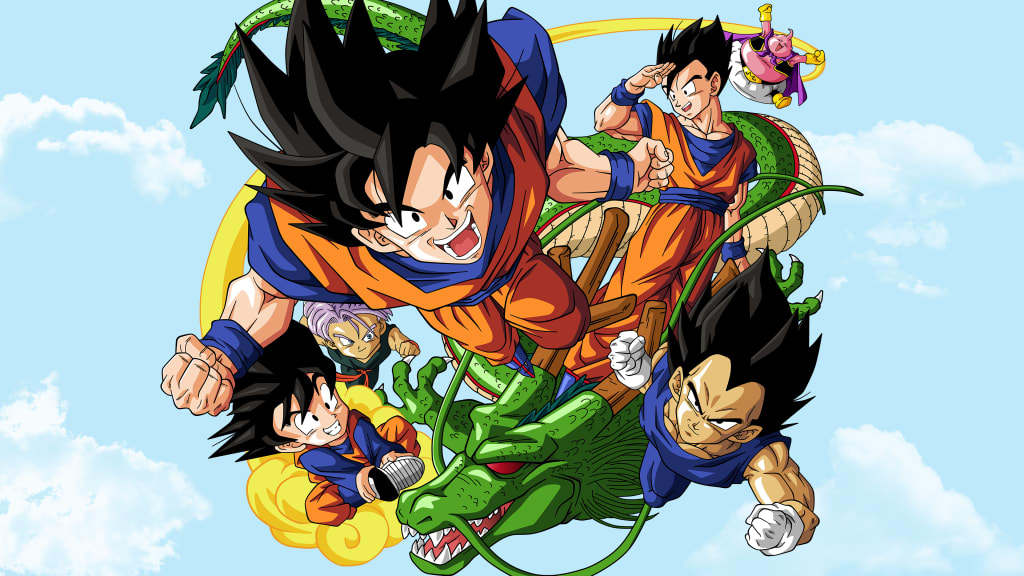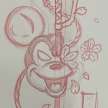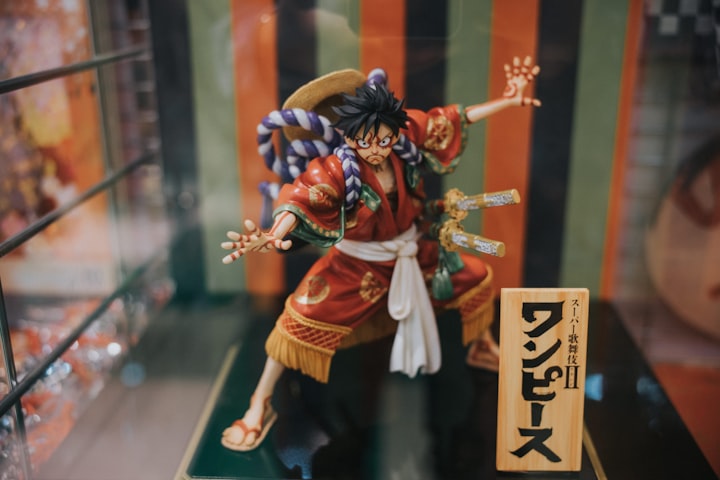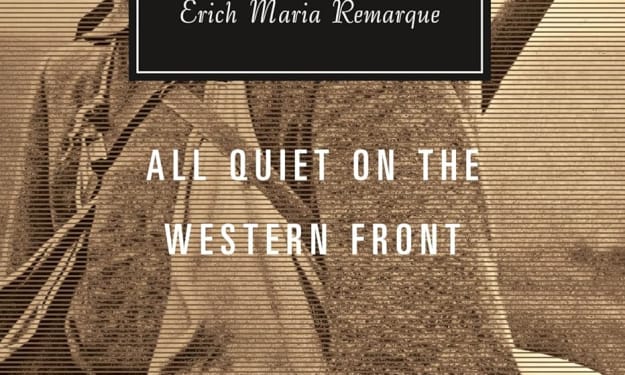Dragon Ball Z and Japanese Lore
A Fusion of Epic Proportions

Dragon Ball Z (DBZ), created by Akira Toriyama, stands as a cultural juggernaut that has transcended borders and left an indelible mark on global pop culture. While often celebrated for its intense battles and iconic characters, a closer look reveals a profound connection between Dragon Ball Z and Japanese lore. This essay delves into the intricate web of cultural influences that shape the series, exploring the fusion of DBZ's narrative elements with Japanese mythology, folklore, and historical context.
1. The Saiyan Saga: Samurai and Honor Codes:
The Saiyan Saga, which introduces the Saiyan race, mirrors elements of the samurai ethos deeply ingrained in Japanese culture. The Saiyans, akin to wandering warriors, embody traits of honor, discipline, and a strong sense of duty. Vegeta, the Saiyan prince, exhibits a strict code of pride and an unyielding commitment to his warrior heritage. This resonates with the Bushido code, the ethical framework followed by samurai emphasizing virtues like loyalty, bravery, and self-discipline. The clash of Saiyan warriors reflects the historical samurai battles that defined Japan's feudal era.
2. Shenron and the Dragon Balls: Inspired by Shenlong of Chinese and Japanese Mythology:
The Dragon Balls, central to Dragon Ball Z's narrative, draw inspiration from East Asian mythology, particularly the Chinese and Japanese dragon lore. Shenron, the Eternal Dragon, bears a striking resemblance to the Chinese dragon, a symbol of power and good fortune. In Japanese mythology, dragons are revered creatures, often associated with water deities. The Dragon Balls, with their ability to summon Shenron and grant wishes, mirror the mythological concept of revered dragons possessing magical abilities. This connection highlights Toriyama's skillful blending of cultural elements to enrich the series' narrative.
3. Namek Saga and Japanese Environmentalism:
The Namek Saga introduces the planet Namek, a lush and serene world devastated by conflict. This storyline echoes Japan's own experiences with environmental issues and post-war reconstruction. The Namekian people, connected to their environment, mirror the importance of harmony with nature in Japanese Shinto beliefs. The Namek Saga subtly underscores the theme of environmentalism, drawing parallels with Japan's historical and cultural attitudes toward nature.
4. The Frieza Saga: Influence of Japanese Feudal Lords and Tyranny:
The Frieza Saga delves into themes of tyranny and resistance, reminiscent of Japan's feudal past. Frieza, a tyrannical ruler, bears parallels to historical despots, including feudal lords who sought absolute power. The Saiyan rebellion led by Goku and Vegeta mirrors historical uprisings against oppressive rulers in Japan. The saga explores the consequences of unchecked power and the struggle for liberation, drawing inspiration from Japan's feudal history.
5. Cell Saga: Reflections of Human Hubris and Nuclear Anxiety:
The Cell Saga, with the creation of the bioengineered android Cell, reflects Japan's post-war anxieties and the consequences of human hubris. The nuclear undertones are palpable, echoing Japan's own experience with atomic devastation. Dr. Gero's androids, reminiscent of the ethical dilemmas surrounding scientific experimentation, mirror Japan's post-war technological advancements and societal concerns about unintended consequences.
6. Buu Saga: Balancing Chaos and Harmony - Inspired by Japanese Folklore:
The Buu Saga introduces the ancient and chaotic force Majin Buu, drawing inspiration from Japanese folklore entities that embody chaos and transformation. Buu's various forms echo the shape-shifting creatures found in Japanese mythology, challenging the concepts of good and evil. The saga explores the delicate balance between chaos and harmony, a recurring theme in Japanese folklore where supernatural entities disrupt and restore equilibrium.
7. Martial Arts Influence: The Power of Ki and Japanese Martial Arts:
The concept of Ki, a life force energy harnessed by characters in Dragon Ball Z, draws inspiration from Japanese martial arts traditions. The use of Ki is akin to concepts found in disciplines like Aikido or Qigong, where practitioners harness their life energy for combat and self-improvement. The fusion of martial arts philosophy into the series adds depth to the characters' abilities and reflects Toriyama's appreciation for Japanese martial arts culture.
8. Fusion Technique and Cultural Syncretism:
The Fusion Dance, a technique allowing two characters to merge into a single, more powerful being, mirrors the Japanese concept of cultural syncretism. Japan, historically influenced by various cultures including China and Korea, has a rich tradition of blending and adapting foreign elements into its own cultural identity. The Fusion Dance becomes a metaphor for cultural amalgamation, emphasizing the strength derived from diverse influences.
9. Goku's Journey and the Hero's Quest:
Goku's journey, from a humble Saiyan child to the savior of the universe, follows the archetypal hero's quest found in Japanese folklore and global mythology. The hero's journey often involves facing trials, acquiring wisdom, and ultimately achieving enlightenment. Goku's unwavering optimism and continuous pursuit of self-improvement embody the heroic ideals deeply ingrained in Japanese storytelling traditions.
10. Impact on Japanese Popular Culture:
Dragon Ball Z's influence extends beyond its narrative elements, shaping Japanese popular culture and inspiring subsequent generations of creators. The series has become a cultural touchstone, referenced in various media, from television shows to advertisements. The iconic Kamehameha wave and the Super Saiyan transformation have become symbols embedded in Japan's cultural lexicon.
Conclusion:
In conclusion, Dragon Ball Z's profound connection to Japanese lore is a testament to Akira Toriyama's storytelling prowess and cultural acumen. The series seamlessly weaves together elements of Japanese mythology, folklore, and historical context, creating a narrative tapestry that resonates with audiences globally. Dragon Ball Z stands not only as a seminal work in the anime and manga landscape but as a cultural bridge that celebrates Japan's rich heritage while embracing the universal themes of heroism, resilience, and the eternal struggle between chaos and harmony. As Dragon Ball Z continues to captivate audiences, its enduring legacy reflects the timeless appeal of cultural narratives that transcend borders and generations.
About the Creator
JRManglicmot
A Striving father and husband, trying to be the best I can be. I'm not perfect, but I try to be the one my family can look up to. I stumble and make mistakes from time to time, most often, but I try to learn from my mistakes.
Enjoyed the story? Support the Creator.
Subscribe for free to receive all their stories in your feed. You could also pledge your support or give them a one-off tip, letting them know you appreciate their work.






Comments (1)
Excellent work!